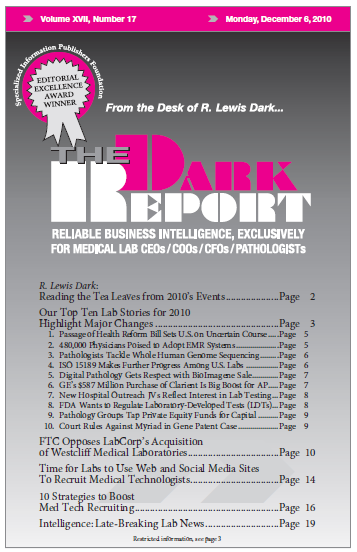CEO SUMMARY: Headhunters regularly see the best and worst of clinical laboratories in the areas of medical technologist recruiting and retention. Based on her experience, veteran recruiter Peggy McKee offers 10 proven strategies that every laboratory can use to improve both its recruitment of med techs, as well as retention of staff. These strategies reinforce …
10 Strategies to Boost Med Tech Recruiting Read More »
To access this post, you must purchase The Dark Report.


